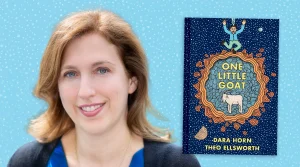 TORONTO — Google “Reb Zalman,” and you’ll find about 250,000 hits for the founder of the Jewish Renewal movement, which combines elements of mysticism and Chassidism with newer concepts like feminism and eco-kashrut.
TORONTO — Google “Reb Zalman,” and you’ll find about 250,000 hits for the founder of the Jewish Renewal movement, which combines elements of mysticism and Chassidism with newer concepts like feminism and eco-kashrut.
Rabbi Zalman Schachter-Shalomi, left, with his son Rabbi Shalom Schachter. [Frances Kraft photo]
Rabbi Zalman Schachter-Shalomi, 86, says he has “mostly retired from leadership,” and doesn’t travel much any more.
In an interview last week at the Toronto home of his son Rabbi Shalom Schachter, the Colorado-based Reb Zalman (as he is commonly known) said his participation this Shabbat morning, April 23, at Darchei Noam is “a very exceptional thing.”
Rabbi Schachter-Shalomi – who hyphenated his name following the signing of the 1978 Camp David accords, with the idea that he would drop the “Schachter” once there was peace – will lead Torah study from 9 to 10 a.m. He will also take part in services and share insights with the congregation. His son, whom he ordained in 2005, will be involved in the service as well.
Earlier this month, father and son were in Calgary, Alta. where Shalom’s brother lives, for an intergenerational Shabbat weekend at two congregations.
Rabbi Schachter-Shalomi, who taught at the University of Manitoba from the mid-1950s to the mid-1970s, now spends much of his time writing – completing what he calls his “December work” because of his age and the approach of life’s end. He is retired from Naropa University, where he taught contemplative Judaism and ecumenical spirituality.
Aside from Renewal – in which the late Rabbi Shlomo Carlebach also played a key role – Rabbi Schachter-Shalomi’s other focus in recent years has been “Spiritual Eldering.” Its philosophy is reflected in the title of his 1995 book From Age-ing to Sage-ing: A Profound New Vision of Growing Older.
Born in Poland and raised mostly in Austria before his family made its way to New York in 1941, the future rabbi was educated in both a “leftist” Zionist high school and an Orthodox yeshiva. His father was a Belzer Chassid with liberal tendencies, according to the rabbi’s website (rzlp.org).
An online chronology of his life euphemistically refers to his 1966 “graduation” from Lubavitch, following experimentation with LSD and subsequent writings about the psychedelic drug.
He educated himself about other paths as well, among them Sufism and Buddhism.
As a result, he now believes that Judaism is “organismic.
“To start saying that one religion has it all is like saying that the whole body could be made of kidney.”
He says Jewish Renewal offers what Jewish seekers may look for or have found elsewhere – including meditation, singing, and repetition of mantras.
Personally, he said, he found Chassidism “very satisfying,” and considered himself a “card-carrying” Lubavitcher. In the late 1940s, the Lubavitcher Rebbe, Rabbi Menachem Mendel Schneerson, directed him and Rabbi Carlebach to reach out to college students.
However, with time, he found there were things about Chassidism that “didn’t belong to the new paradigm,” like the separation of men and women, and the necessity for “a great deal of observance.”
Given his exploration of other paths and the resulting censure he faced from Chassidim, what led him toward Renewal rather than disenchantment with Chassidism, or even with Judaism altogether?
“Let me ask this inside,” he said, closing his eyes for a moment to ponder the answer.
Religions are disappointing, he said, “but God is not… while I may have given up on a form of Judaism, I didn’t give up on God. To me, the issue of living a godly life is the important thing.”
The rabbi has no objection to people calling Jewish Renewal a denomination – “Let them do it, gesunterheit!” he says – but he sees it more as “a method” than a fifth denomination.
There is only one congregation in Canada listed on the website of Aleph: Alliance for Jewish Renewal, although others have a Renewal approach, and elements of Renewal can be found in synagogues of other denominations including Darchei Noam, which is Reconstructionist.
Worldwide, Renewal communities can be found in nine countries.
Although the rabbi said he didn’t know yet what he would be focusing on when he speaks at Darchei Noam, he would like to help people with what he calls “davenology.”
Explaining the term, Rabbi Schachter-Shalomi said that to become closer to God, people need to open their hearts and minds and learn to use the siddur “as a road map for an inner journey.”
Reciting a prayer is not going to help them get closer to God, he added.
His message for the Jewish community? “Every Jew is a Jew by choice. Make sure you live your choice, and love your fellow Jew regardless of his affiliation.”






